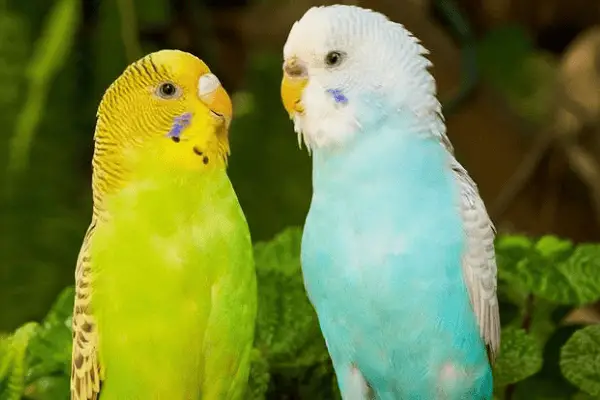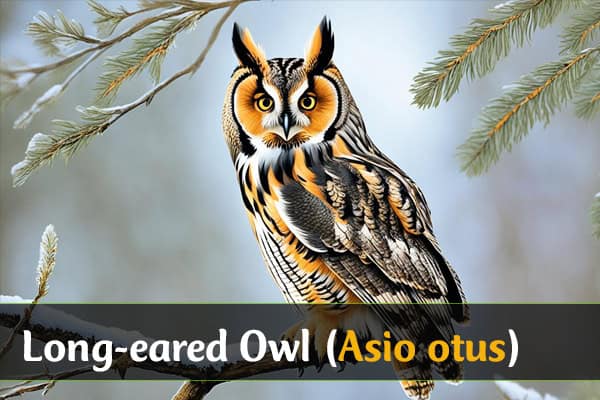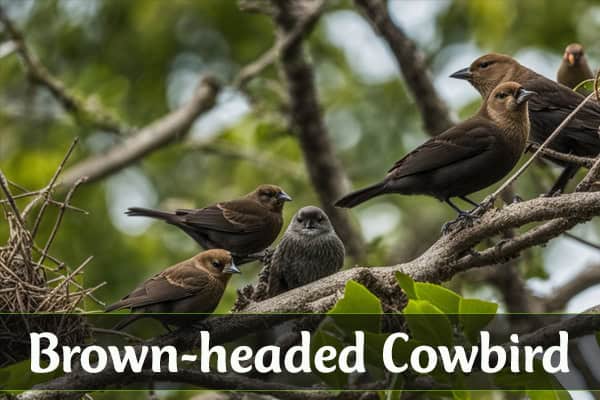Can Parakeets Talk? All About Parakeets Talking
So, you’ve got a new budgie as a pet, huh? You might be wondering, “Can parakeets talk?” Well, the answer is yes, they can! However, there’s a catch—you need to teach them.
First off, parakeets have their little songs that can tell you how they’re feeling, whether it’s happy or sad. But if you want them to say specific words, you’ve got to establish a routine.
Now, let’s delve into all the ins and outs of parakeet sounds and the art of teaching them to speak.
Can parakeets talk?
Indeed, parakeets can communicate through speech, primarily among themselves. However, if you didn’t acquire your budgie when it was under a year old, teaching it to speak human words might prove challenging.
This difficulty arises due to an imprinting process that occurs in young parakeets, which fades as they mature. Generally, male parakeets are more adept at learning human speech compared to females, and they tend to be more vocal overall.
Regarding their communication habits with both their avian peers and human companions, parakeets are remarkably chatty creatures, driven by their social instincts.
Their vocal repertoire encompasses a range of sounds, each conveying a distinct message. In pairs, these budgies create a lively atmosphere with their constant chirping, adding a cheerful ambiance to any home.
How do parakeets talk?
Talking parakeets produce sounds differently than humans because of their unique anatomy. Unlike us, they lack vocal cords, meaning they can’t generate sounds using their larynx like we do.
Instead, parakeets rely on their beaks and airways to create sounds, whether mimicking human words or communicating with their fellow birds.
While there’s a popular belief that budgies are intelligent for their ability to pick up words easily, it’s actually just mimicry. They don’t understand the meaning behind the words they repeat.
However, through proper training, a budgie can learn to mimic words and sounds initiated by their pet parent, sometimes triggered by cues like hand gestures.
Males are more likely to speak than females
Yes, indeed, the amount of talking varies between male and female parakeets. Generally, males tend to vocalize more than females and are quicker at learning to speak.
This phenomenon isn’t unique to parakeets but extends to various bird species. For instance, male cockatiels are also more inclined to be vocal compared to females. This discrepancy likely stems from the need for males to attract mates for breeding purposes.
So, if your goal is to teach your parakeet to talk, opting for a young male might be a wise choice, as they are more receptive to learning. Alternatively, you could acquire a parakeet from a breeder who has already initiated the training process, sparing you the effort of teaching them yourself.
Common parakeet sounds
When you become a budgie parent, your home will be filled with a diverse range of parakeet sounds. It’s essential to familiarize yourself with these sounds to understand their meanings.

Distinguishing between various parakeet sounds is crucial because it helps discern the state of your pet bird’s well-being. Different sounds indicate different emotions or conditions.
For instance, parakeets communicate through a wide array of sounds, including chirps, contact calls, chatter, trills, and more. Whistling often signifies contentment, with some budgie parents even teaching their birds to whistle tunes.
On the other hand, screaming may indicate pain, distress, or fear, serving as a warning sign to pay attention to your bird’s needs. Singing is another common sound emitted by happy parakeets, while chatter or beak grinding might suggest agitation or preparation for sleep.
The sound of chirping is synonymous with joy in parakeets, indicating their happiness.
Clicks are yet another common sound among parakeets, often signaling their contentment and happiness.
How to teach a parakeet to talk?
Make sure your parakeet is happy
Before embarking on the task of teaching your budgie to talk, it’s crucial to ensure that your feathered friend is both in good health and high spirits. Without these essentials, your budgie may not be receptive to learning new skills.
Take a moment to assess your budgie’s living conditions. Is the cage spacious enough? Is he receiving an adequate diet? Any underlying medical issues can hinder his ability to learn.
A happy budgie exhibits signs such as high energy levels and frequent vocalizations, including the occasional parakeet song. Budgies housed with a companion tend to be happier compared to solitary ones.
However, if you observe signs of lethargy, disinterest in communication, or deterioration in feather quality, it’s imperative to consult a veterinarian promptly. Prioritize your budgie’s health over teaching him to talk, as an unhealthy bird won’t be able to focus on the learning process effectively.
Time of the day is important
Training your talking bird early in the morning can significantly enhance the learning process. During this time, their well-rested brains are more receptive to new information, making memorization easier.
Parakeets are particularly energetic, alert, and mentally sharp in the morning, which further facilitates the learning process. While it’s crucial to socialize with your budgie throughout the day, dedicating training sessions to the morning can optimize their ability to pick up new words.
Before starting vocal training, consider allowing your parakeet to have their first meal of the day. A well-fed bird is more receptive to learning new tricks or words compared to one with an empty stomach. This ensures they are in the best possible condition for successful learning.
Repeat simple words
While some birds can mimic human speech to some extent, there are limitations to their learning abilities, primarily due to the absence of vocal cords. This makes it challenging for them to articulate complex words.
To optimize your budgie’s learning experience, it’s best to communicate with them as you would with a young child. Name objects in their environment and consistently greet them with “Hello” and bid farewell with “Goodbye” whenever you enter or leave.
When selecting a name for your pet parakeet, opt for something simple, resonant, and easy to pronounce, preferably with fewer syllables.
Furthermore, you can teach your budgie simple phrases like “Thank you” by repeating them each time you offer a treat or a particular dish of bird food. Consistency is key to reinforcing these associations and facilitating their learning process.
One word at a time
Budgies typically don’t talk in sentences. Therefore, it’s more effective to concentrate on teaching them individual words before progressing to multiple-word phrases.
When selecting words for your budgie to learn, focus on those containing consonants like d, k, p, t, or b, as these are easier for them to grasp. Avoid overly vowel-heavy phrases, as they can pose a greater challenge for your bird.
Communication clarity is key; speak distinctly and repeat the words you’re teaching consistently. Introducing too many words or phrases simultaneously can lead to confusion for your pet bird.
Over about seven to eight weeks, aim to teach your budgie one simple word at a time. Once they’ve mastered one word, you can move on to the next, gradually expanding their vocabulary.
Use treats
You’re probably familiar with the sounds your parakeet makes when they’re rewarded for good behavior. But did you know that treats play a crucial role in teaching your budgie how to talk?
When your pet bird shows progress in learning new words, it’s important to reward them. This reinforcement, often in the form of a piece of fruit or a new toy, helps solidify their behavior. Essentially, it lets your parakeet know that a treat is in store when they do a good job and say the word you’re teaching them.
Millet sprays are excellent treats for your budgie’s learning process, but so are carrots and celery. Opting for vegetables like celery is especially beneficial as they provide essential nutrients without too much sugar.
If your parakeet enjoys exploring outside of their cage, letting them out as a reward can also be effective. This not only serves as a treat but also enriches their environment and promotes mental stimulation.
Must read: White Birds in Florida
Build a routine
Consistency is crucial when teaching your parakeet to talk. Without a clear plan and consistent routine, your pet bird may become confused or forget the words you’ve taught them.
Devoting time and effort to the task is essential. Consistent daily practice, ideally in the morning, is key to reinforcing learning.
When your parakeet shows progress, they may become more enthusiastic, expressing their happiness through a variety of vocalizations.
Patience is paramount, especially with older parakeets who may take longer to learn. Realistic expectations are important, as not all budgies will successfully learn to talk, but persistence can still yield positive results.
Respond to activities
A significant aspect of teaching a parakeet to talk involves constant interaction with your budgie. While some behaviors may be easier to interpret than others, spending time with your pet bird allows you to understand their needs more effectively.
Over time, you’ll likely learn to recognize when your parakeet needs to go to the bathroom, is ready for bed, or is simply hungry. Rather than merely ensuring your budgie’s basic needs are met, engage with them verbally when you notice something needs attention.
For instance, if you observe signs of sleepiness, communicate with your bird as you cover their cage with a cloth for bedtime. Similarly, if your parakeet appears hungry, talk to them as you offer a snack or food.
Creating a comfortable environment where your parakeet feels at ease around you is essential for successful training. Constant verbal interaction helps build trust and familiarity, increasing the likelihood of your budgie learning to talk effectively.
Also Visit: Hummingbirds in Michigan
Frequently Asked Questions
Q1: How long does it take for parakeets to talk?
It varies, but typically around 3 to 6 months.
Q2: How do you teach parakeets to talk?
Consistent repetition, positive reinforcement, and patience.
Q3: Can parakeets speak?
Yes, they can learn to mimic human speech.
Q4: What kind of parakeets can talk?
Generally, budgerigars (commonly known as budgies) are known for their talking ability.
Q5: Do male or female parakeets talk?
Both genders can learn to talk, but males are often more vocal.
Q6: Do girl budgies talk?
Yes, female budgies can also learn to talk, although they may be less inclined than males.
Q7: Are parakeets friendly?
With proper socialization, parakeets can be very friendly pets.
Q8: Can parakeets learn their name?
Yes, with consistent training, parakeets can learn to recognize and respond to their names.







